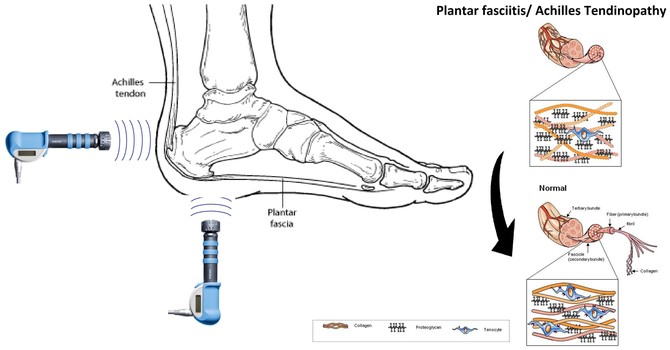Whether you're recovering from an ACL tear, chronic patellar tendinopathy, or post-surgical meniscus repair, one of the most frustrating aspects of knee rehab is losing strength and size in your quads, glutes, and hamstrings. That muscle loss doesn’t just delay recovery — it increases your risk of re-injury and long-term dysfunction.
At Strength & Spine Chiropractic, we use Blood Flow Restriction (BFR) training as a cornerstone of modern rehab. It’s one of the most research-supported, performance-driven tools to maintain strength and accelerate healing after a knee injury — all while minimizing stress on the joint. In our office, we utilize the Smartools BFR Cuffs.
Let’s dive deeper into how BFR works and why every serious athlete should be using it post-injury.
What Is BFR Training?
BFR involves the application of pneumatic cuffs or elastic bands to the upper part of a limb (e.g., upper thigh), which partially restrict venous blood return while allowing arterial inflow. This creates a hypoxic (low-oxygen) environment in the working muscle.
While performing low-load exercises (typically 20–30% of your 1-rep max), the body perceives the effort as much more intense, stimulating adaptations that typically only occur during heavy strength training.
Physiological Benefits of BFR for Knee Pain and Injury
1. Activates Type II Muscle Fibers with Minimal Load
Type II (fast-twitch) fibers are essential for power, speed, and explosive movements — and they’re usually only recruited during high-intensity training. BFR tricks the body into recruiting these fibers during low-load exercises, which is essential when heavy lifting isn't an option during knee rehab.
2. Stimulates Muscle Growth and Strength
Studies show BFR training activates the mTOR pathway and increases anabolic hormone release (like growth hormone and IGF-1), leading to hypertrophy and strength gains — even when lifting light weights.
This means you can build strength without stressing healing ligaments, tendons, or cartilage.
3. Reduces Joint and Soft Tissue Stress
Traditional strength training at 70–90% 1RM places significant compressive forces on the knee joint — something you want to avoid during early or mid-stage rehab. BFR allows athletes to maintain gains while minimizing shear forces and impact on the joint.
4. Enhances Blood Flow and Tissue Healing
Once the cuffs are removed, there's a surge of reactive hyperemia — a rapid increase in blood flow that brings oxygen and nutrients to the injured area, while flushing out metabolic waste. This process supports faster healing of tendons, ligaments, and surrounding tissues.
Why Athletes Must Use BFR After a Knee Injury
Whether you're a football player, marathoner, powerlifter, or weekend warrior — you can't afford to let your body regress while recovering. Here’s how BFR keeps your performance edge:
1. Minimizes Muscle Atrophy (Especially Quad Wasting)
Knee injuries — especially post-op — often lead to arthrogenic muscle inhibition (AMI), which shuts down quad activation. BFR combats this by forcing recruitment and metabolic stress without needing heavy weights, keeping the vastus medialis oblique (VMO) and glute med engaged.
2. Bridges the Gap Between Rehab and Return to Sport
Most injuries require a progressive loading plan. BFR creates an opportunity to train during the early and middle stages of rehab — long before you're cleared to squat or lunge heavy. It helps build resilience safely, reducing your risk of reinjury during the return-to-play phase.
3. Restores Functional Strength Faster
From deceleration and cutting to vertical jumping, knee strength is foundational for sport. BFR helps restore force output faster, especially in the posterior chain and quad complex, which are often the last to come back after an injury.
4. Supports Tendon and Ligament Healing
Emerging research supports BFR’s role in improving tendon remodeling and collagen synthesis, making it a smart tool for athletes with chronic tendinopathies or post-surgical grafts.
What the Research Says
-
Post-ACL Reconstruction: Studies show BFR preserves quadriceps muscle size and function better than traditional low-load rehab, especially in the first 12 weeks post-op.
-
Osteoarthritis: Patients with knee OA using BFR reported improved function, less pain, and greater strength without worsening symptoms.
-
Athletic Performance: Multiple trials confirm that BFR can mimic the effects of high-intensity resistance training, improving both endurance and muscle size in athletes unable to lift heavy.
Is BFR Safe?
Yes — when used correctly. BFR should only be applied by trained professionals who understand proper cuff placement, pressure calibration, contraindications, and progression protocols.
At Strength & Spine Chiropractic, we use clinical-grade SmartCuffs and evidence-based programming tailored to your injury stage, training history, and sport demands.
Final Thoughts
Injury doesn’t mean you have to stop progressing. With the right strategies, you can heal smarter, maintain performance, and return stronger than before. Blood Flow Restriction is not a trend — it’s a proven method that bridges the gap between injury and performance.
If you're recovering from a knee injury, dealing with patellar pain, or want to integrate cutting-edge sports rehab into your plan — BFR could be the missing piece.
Schedule Your BFR Session Today
Strength & Spine Chiropractic | Tampa & Pinellas Park
Sports-focused rehab for athletes, lifters, and everyday movers.
Call: 727-228-3030
Book Online: strengthchiro.com
Email: [email protected]

